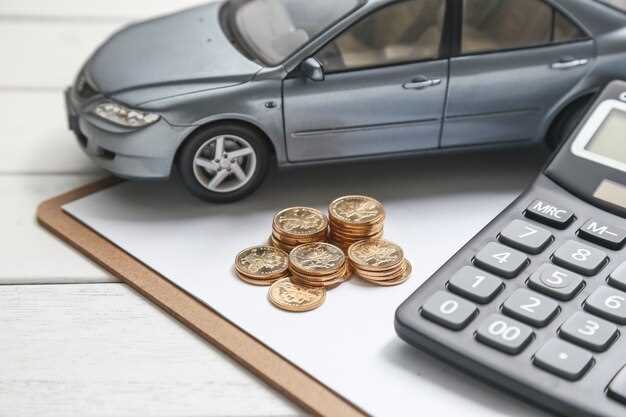
Attending a car show or auction can be an exciting experience, especially for enthusiasts of classic automobiles. However, the thrill of these events often comes with significant costs. A well-planned budget is essential for ensuring that you can enjoy the event without financial strain. Implementing effective budgeting strategies will allow you to participate fully in the excitement while keeping your finances in check.
To begin with, it’s crucial to establish a clear understanding of your financial limits. Start by assessing your overall budget for the event, taking into account not only the costs of admission or registration but also additional expenses such as travel, lodging, and meals. Consider allocating funds specifically for your must-have items, whether that be a classic car, memorabilia, or collectible parts. This structured approach will help you avoid overspending and remaining focused on what truly matters during the event.
Moreover, it is beneficial to conduct thorough research on the specific car show or auction you plan to attend. Different events may have varying costs associated with attendance, and knowing the average price ranges for items you are interested in can help you create a realistic budget. This insight allows you to make informed decisions and prioritize your spending, ensuring that your experience remains enjoyable while staying within your predefined financial boundaries.
Identifying Key Expenses for Classic Car Events

Effective budgeting is essential for successfully organizing classic car events, including shows and auctions. Understanding the key expenses involved helps ensure a well-prepared financial plan. Here are the primary areas to consider when assessing costs:
Venue Rental: One of the largest expenses is often the rental of a suitable venue. Factors such as size, location, and amenities play a significant role in determining costs. Indoor spaces may require additional expenditures for lighting and climate control, while outdoor venues need arrangements for weather protection.
Marketing and Promotion: Allocating funds for marketing is crucial for attracting attendees and participants. This can include website development, social media advertising, printed materials, and local media coverage. Engaging potential car owners and enthusiasts through targeted promotions can significantly affect event turnout.
Permits and Insurance: Depending on the location, various permits may be necessary for hosting a classic car event. Additionally, liability insurance protects against unforeseen incidents that may occur during the event. These expenses are vital to ensure compliance with local regulations and safeguard the organizers’ interests.
Logistics and Equipment: Cost considerations also encompass logistics such as transportation for cars, setup and teardown supplies, and equipment rentals. This might include tents, barricades, seating arrangements, and audiovisual equipment for announcements and presentations.
Staffing: Depending on the scale of the event, hiring staff to manage operations can incur additional costs. This may cover everything from event coordinators and security personnel to volunteers who assist with registration and visitor engagement.
Food and Beverage: If the event plans to provide refreshments, budgeting for food and beverage services is essential. This can involve hiring catering services or setting up food trucks, and it influences both guest satisfaction and overall experience.
By carefully evaluating these key expenses, organizers can create a realistic budget that not only covers necessary costs but also enhances the overall experience for attendees and participants at classic car events.
Maximizing Revenue Opportunities at Auctions

To maximize revenue opportunities at auctions, a well-structured budgeting strategy is essential. Begin by analyzing past events to determine which types of items attracted the highest bids. This information can guide future selections and cater to audience preferences, ultimately enhancing profitability.
Incorporate diverse revenue streams into the auction’s framework. Consider offering exclusive sponsorship packages to local businesses that align with the event’s theme. This not only boosts income but also fosters community involvement, increasing attendance and engagement.
Utilize promotional campaigns effectively to draw attention to the auction. Budget for targeted advertising across social media platforms and local outlets, ensuring a reach that encompasses potential bidders and attendees. Creating buzz around featured items can also drive higher engagement.
Host pre-event activities or VIP experiences that require paid admission. These events can create added value and help generate additional revenue while building excitement for the main auction. Ensure that these activities are included in the overall budget to assess their impact on the event’s profitability.
Moreover, consider utilizing a tiered bidding approach that encourages competitive bidding. By setting minimum bid increments and providing options for buyouts or reserves, you can effectively maximize bids on high-value items.
Finally, post-event evaluations are crucial. Analyze financial outcomes thoroughly to identify successful strategies and areas for improvement. This data will serve as a foundation for refining future budgeting processes and enhancing revenue opportunities at subsequent auctions.
Creating a Contingency Plan for Unexpected Costs
When organizing a classic car show or auction, thorough budgeting is crucial, but creating a contingency plan for unexpected costs is equally important. Events can face various unforeseen expenses, from last-minute venue changes to increased insurance fees, and being prepared can save organizers from financial strain.
Begin by identifying potential risks that could lead to unexpected costs. This can include factors such as weather conditions, resource availability, and fluctuating prices for supplies and services. By understanding these variables, event planners can devise strategies to mitigate their impact.
Allocate a specific percentage of your overall budget as a contingency fund. A typical recommendation is to set aside 10-15% of your total estimated costs. This reserve should remain distinct from the main budget to ensure clarity. This practice helps to cover unplanned expenses without derailing your overall financial strategy.
Additionally, maintain communication with vendors and contractors. Establishing strong relationships can facilitate negotiations and allow for flexibility in pricing or service adjustments. Having multiple quotes for essential services can also provide leverage when unexpected issues arise.
Furthermore, consider incorporating a line item in your budget for potential emergencies. This not only helps with transparency for stakeholders but also reinforces the importance of being proactive in financial planning. Assessing the likelihood of various risks and their potential impact on the event can guide the decision on how much to set aside.
Finally, review and adjust the contingency plan regularly. After each event, analyze actual expenses against the budget and update your strategies based on experiences. This ongoing evaluation will enhance your preparedness for future events, ensuring that your classic car show or auction remains successful and within financial bounds.

